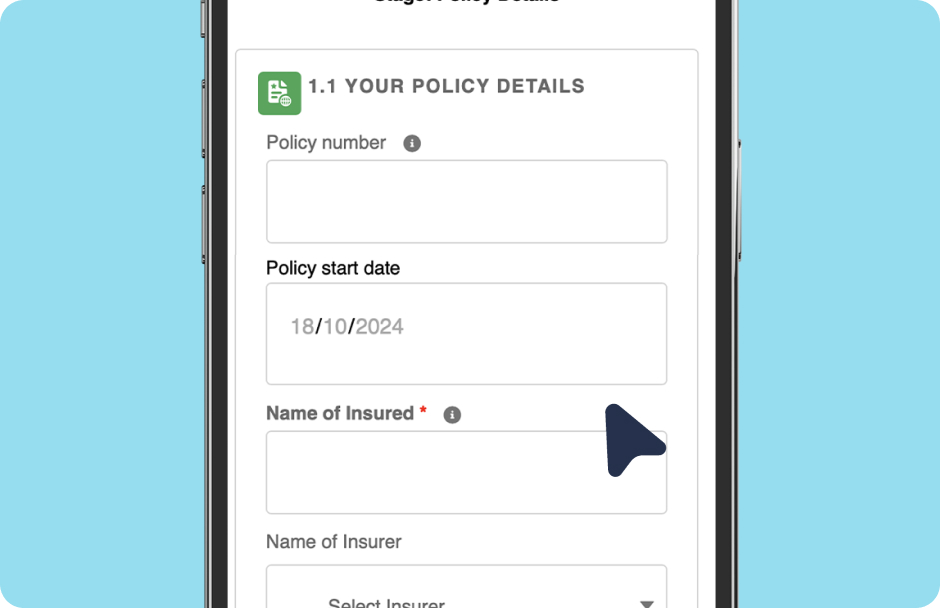Compare quotes from our trusted insurance partners:
On this page:
What is personal trainers’ insurance?
Personal trainers’ insurance (the different types of cover available to fitness businesses) helps protect against the cost of unexpected bills, like negligence claims, third party injuries, and accidental property damage.
Helping clients reach their health and fitness goals is what you do best. But accidents and injuries could leave your business in the red. Insurance for personal trainers can help you manage the cost of lawsuits and other unplanned events, so you don’t suffer a financial loss.

Why do personal trainers need insurance?
Personal trainers may need business insurance to meet legal and contractual requirements and cover unplanned expenses.
Hold classes on council land.
Work as a gym contractor or sub-contractor.
Pay legal costs if you face a liability claim.
Who needs personal trainers’ insurance?
Business insurance is essential to consider for many fitness businesses, such as personal trainers, gym owners, yoga teachers, and more!
Personal Trainers
Fitness Instructors
Gym Owners
Pilates Instructors
Exercise Physiologists

Did you know?
A Public Liability policy may be required if you operate as a gym or studio contractor or obtain a council permit to run outdoor sessions in public areas. Gyms and fitness studios typically require freelance fitness pros to have Public Liability insurance. You may be asked for proof of insurance before you can work on the premises.
What types of insurance do fitness professionals need?
We offer a range of insurance options designed to protect your professional reputation, equipment, and more! Build an insurance package that fits your needs and buy in minutes.
Popular cover for personal trainers:
Personal trainers may also consider:
Let’s cover your small business on the go
Start a quote to see how much you can save and buy online in minutes.
How much does personal trainers’ insurance cost?
The average cost of business insurance for personal trainers is $31 per month* with BizCover.
However, the price you pay will depend on several factors, such as where you work and the size of your business.

How is the cost of insurance calculated?
Risks of the industry
Cover level amount
Annual turnover
Number of employees
Claims history
*Customer Average Monthly Payment Report is based on 1 July 2023 to 30 June 2024 and presented as a guide only. It may not reflect pricing for your particular business, as individual criteria will apply.
Get cover that works with the risks of your business
Select different cover amounts for each policy listed below.
This is the most you will be paid out if you need to make a claim.
Unsure how much to choose? Think about:
Underinsurance
We know it’s tempting to select a lower level of cover to reduce premiums, but this can leave businesses shocked and insufficiently covered when making a claim.
Ways underinsurance catches business owners out:
Inflation
With inflation, the cost of living and doing business increases. Remember to cover you, your tools and assets for the rising costs of replacing or covering them, not what you paid for them – you may be surprised at the difference.
Not covering the full cost of your risks
If you select cover levels for less than the value you may be found liable – left out of pocket when it comes to claims time. It’s important to review your risks and determine how much you will need to cover any claim that may come your way.

Factors influencing cost
Risk of the industry
Cover level amount
Annual turnover
Number of employees
Claims history
Customer Average Monthly Payment Report is based on 1 July 2023 to 30 June 2024 and presented as a guide only. It may not reflect pricing for your particular business, as individual criteria will apply.
Get cover that works with the risks of your business
Select different cover amounts for each policy listed below.
This is the most you will be paid out if you need to make a claim.
Unsure how much to choose? Think about:
Statutory professional requirements
Cover required by contracts
Number of employees being covered
Your contract value
Worst case scenario claim size
Underinsurance
We know it’s tempting to select a lower level of cover to reduce premiums, but this can leave businesses shocked and insufficiently covered when making a claim.
Ways underinsurance catches business owners out:
Inflation
With inflation, the cost of living and doing business increases. Remember to cover you, your tools and assets for the rising costs of replacing or covering them, not what you paid for them – you may be surprised at the difference.
Not covering the full cost of your risks
If you select cover levels for less than the value you may be found liable – left out of pocket when it comes to claims time. It’s important to review your risks and determine how much you will need to cover any claim that may come your way.
How it works – buying online
5 easy steps to get instant cover online today

Select Profession
Pick Your Covers
Add Business Details
Compare Quotes
Get Covered Online
How to make a claim online
We’ll assist you through the claims process & manage the claim directly with the insurer.

Let us know Fill out our
claims form and provide info
to support the claim
Receive extra support We
will assist you with your claim
Claim results We will notify
you of the claim outcome.



Award-Winning Tech & People
We’re not ones to blow our own trumpet, but we are pretty proud of our innovative insurance platform, outstanding team, and stellar workplace.
See how much others have saved while purchasing policy through BizCover
^ Savings made from January 2024 to April 2025. This information is provided as a guide only and may not reflect pricing for your particular business, as individual underwriting criteria will apply.
Frequently Asked Questions
Yes, many fitness business insurance policies will cover you wherever you work! Policies are available that cover you in multiple locations if you provide services in more than one gym, studio, or outdoor public space.
Yes, fitness business insurance can cover you if you provide virtual training sessions.
The two most common types of insurance for fitness businesses are Professional Indemnity and Public Liability insurance. Each covers different risks that are common to fitness professionals.
Professional Indemnity* protects personal trainers against losses claimed by a third party due to alleged or actual negligence in their professional services or advice. Subject to applicable limits, your Professional Indemnity insurance will meet the associated compensation payable to a third party together with your defence costs (which can include legal costs, investigator costs and expert fees).
Public Liability insurance* protects you and your fitness business in the event a customer, supplier or a member of the public brings a claim against you due to their being injured or sustaining property damage as a result of your negligent business activities.
A Business Insurance Package can be customised to include cover that fits your business needs, such as Portable Equipment insurance (designed to protect your tools, business equipment or electronic items, or unspecified items of lower value) and Contents insurance (covers your business contents or stock if they are damaged in a fire, storm or due to malicious damage or some other defined event listed in the policy).
Personal Accident and Illness insurance* can provide levels of cover for loss of income, permanent disablement and even death if you are unable to work as a result of an injury or illness (even if it occurs outside of work).















Real-life customer reviews verified by Feefo